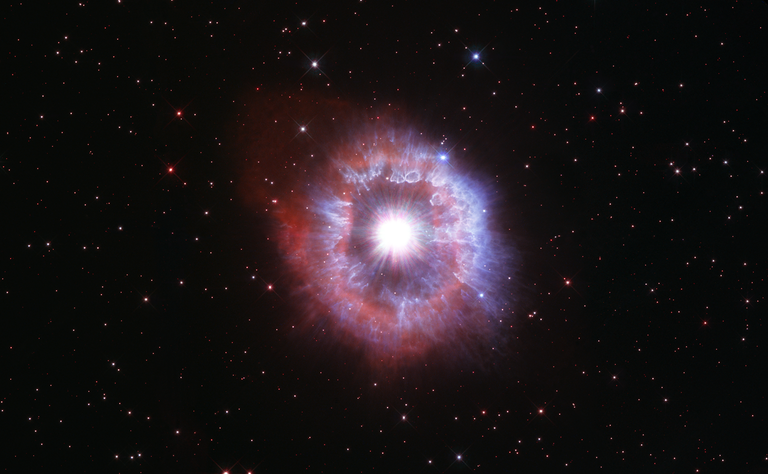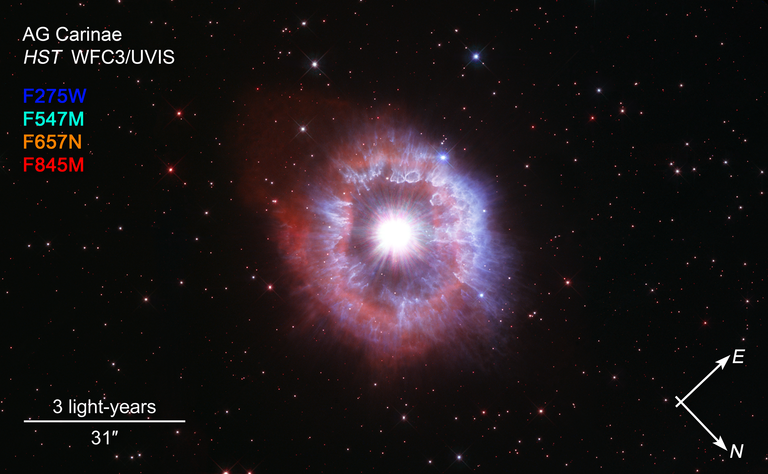Hubble’s Star At The Edge Of Destruction
The Hubble Space Telescope has been in orbit for 31 years and brought us many awesome discoveries. Recently, NASA pointed it a very bright star AG Carinae that is on the brink of destruction.

Credits: NASA, ESA, STScI
- Be also sure to check out my other posts and follow me @kralizec and subscribe to my Youtube channel at Kralizec Gaming Youtube Channel
The Hubble Space Telescope is again pointing at AG Carinae – one of the brightest stars in our galaxy that is surrounded by an awesome glow. This is because its light has to pass through a cloud of dust and gas making us see an object with a full diameter of up to 5 light-years with a star at its very center. Sadly, we don’t get to see it with the naked any as it is roughly 20,000 light-years away from us.
The bright surroundings of AG Carinae were created by a gigantic mass ejection roughly 10,000 years ago (from our point of view). Back then, the star got rid of its outer layer and thus the mass of roughly 10 Suns surrounds it. All of this happened because AG Carinae is a blue giant. More precisely s a blue star with a full mass of 50 – 70 solar masses that has a quite interesting but short lifespan of just a few million years. But to make up for it, it shines with the intensity of a million suns.
We now have the luck to observe such a star shortly after its big eruption that only happens once or twice in its life. AG Carinae thus – for the time being – averted its explosion into a supernova and is stable again. For now. The gravity has been beaten by the power of its fusion reaction and the star is growing again by losing its outer layer, going small but it will remain unstable.

Credits: NASA, ESA, STScI
We currently get to see it in the state in which it shines at the ejected material and sends its solar wind into it at a blazing speed of roughly a million kilometers per second while the ejected material is moving at ten times slower speeds. In the picture, you can see hydrogen and nitrogen in red and the “mist” in the top right shows the place where the solar wind breaks through more easily.
On the other hand, in blue, you can see layers made from dust that are being shined upon by AG Carinae and formed by its solar wind. The image was created by creating a composition of images in the visible and ultra-violet parts of the spectrum.
Stars such as AG Carinae are incredibly rare. Astronomers know of less than fifty when it comes to our and nearby galaxies. The reason is simple – their lives are very short but they have a role to play. When they explode as supernovae they produce valuable heavier elements. Such as the ones in your bodies.
Sources:
- If you like the content I’m producing about science maybe you will like the content I produce about gaming as well! Be sure to check out my other posts!